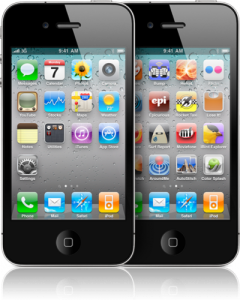
Market research firm the Yankee Group finds that the Apple iPhone is the leading smartphone in Europe, commanding some 40 percent of the market. In comparison, Android netted a 190 percent share, RIM’s BlackBerry came in third with 17 percent, and Nokia managed fourth place with 15 percent of the European smartphone market.
“These findings highlight the continued strength of Apple in the European smartphone market and, in particular, its phenomenal brand appeal,” said Yankee Group research VP Declan Lonergan, in a statement. “The data also highlights the enormous challenges faced by Nokia and RIM to retain mind share and market share in this increasingly dynamic and competitive marketplace.”
The Yankee Group also found that “most” users have more than one device, and they access the same sets of services and content using whichever screen is most appropriate at the time. The study also finds that employees are increasingly taking consumer smartphones into enterprise environments with IT’s explicit approval of the devices or platforms—and employees claim that tablets make them 58 percent more productive during long-distance travel.
The study polled some 5,000 consumers and 2,250 “employees and IT decision-makers” in France, Germany, Italy, Spain, and the United Kingdom.
The Yankee Group’s findings that the iPhone occupies the top of the European smartphone markets contradicts studies in the United States, where Google’s Android platform commands a solid lead. However, recent reports suggest that Android’s growth may have peaked in March—some industry watchers attribute that to the Apple iPhone’s recent availability via Verizon Wireless.
Editors' Recommendations
- Best refurbished iPhone deals: Get an iPhone 14 for $513
- Best iPhone deals: Save on iPhone 15, iPhone 15 Pro Max and more
- How to find your lost phone (tips for iPhone and Android)
- Why you should buy the iPhone 15 Pro instead of the iPhone 15 Pro Max
- iPhone SE 4: news, rumored price, release date, and more


